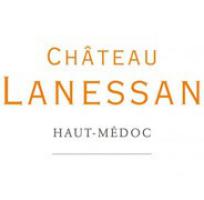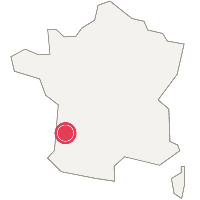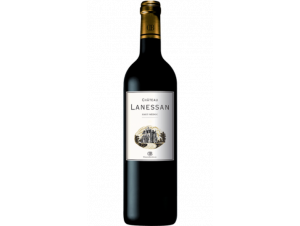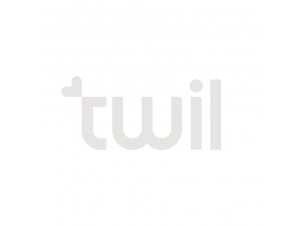You have no items in your shopping cart.
Bordeaux
Château Lanessan
(43 customer reviews)
Cussac-Fort-Médoc, a commune in the Bordeaux region, is home to Château de Lanessan. This imposing eighteenth-century building overlooks an 8-hectare park where you can walk or ride. The Château is also home to the Musée du Cheval. The 19th-century kiosk for children is still intact, as are the dog kennels... These small details from previous centuries give the unique sensation that past and present cohabit... Find out more
 Recommended by
Recommended byParker Wine Advocate - Jancis Robinson - Wine Decider
-

Estimated delivery between 25 and Feb 27,
-

Garantie anti-casse :
Prise en charge totale
The winemaker
The history of Château Lanessan is linked to the Delbos and Bouteiller families
In 1793, Jean Delbos bought the Lanessan estate and launched his wine business with the help of his son. 1878 marked a turning point in the history of the estate, under the direction of André Delbos, with the construction of the château. Seven years later, the vat room and cellars were built, along with the carriage house (now dedicated to the Musée du Cheval), the park, the garden and the Dutch greenhouses. After the Second World War, Jean Bouteiller, grandson of André Delbos, took over the family business. After modernizing the estate, he set about expanding it with the acquisition of Château Lachesnaye and Château Sainte Gemme. The estate has a total surface area of 380 hectares, 85 of which are planted vines.
The early 2000s marked a new milestone for the estate: on the one hand, with the installation of state-of-the-art infrastructures and the arrival of oenologist Eric Boissenot, who brought a touch of modernity to Grand Vin de Lanessan. 2012 saw the formalization of the estate's commitment to eco-responsibility, with the award of the HVE3 label for the preservation of flora and fauna and the cultivation of the soil. In the same year, the estate installed an optical sorting process to enable a finer selection of the berries that will make up the Lanessan Grand Vin during mechanical harvesting. Keen to promote their heritage, the family opens the estate to wine tourism.
Although largely in the majority (60%), Cabernet Sauvignon shares the terroir with Merlot (35%), Petit Verdot (4%) and Cabernet Franc (1%). All thrive on gravel soils (a mixture of gravel and pebbles to which silt, sand and clay are added). This type of soil benefits from good natural drainage, and the pebbles have the ability to store heat during the day and diffuse it to the vines at night.
Château Lanessan, Haut-Medoc AOC, is based on a blend of Cabernet Sauvignon, Merlot and Petit Verdot. It is a complex wine with fleshy tannins. Les Calèches de Lanessan, Haut-Médoc AOC, though based on the same blend as Château Lanessan, is a fruitier wine with silky tannins and fresh, gourmand notes. Finally, the estate also produces Château de Sainte Gemme, Haut-Médoc AOC: this wine is a blend of Sauvignon and Merlot grapes. It is defined as a fruity, supple wine with velvety, crisp tannins. Enjoy at an ideal temperature of 15°C, in a Bordeaux-style red wine glass, with beef, lamb, pheasant, quail, veal, poultry terrines and eggs. Enjoy!
In 1793, Jean Delbos bought the Lanessan estate and launched his wine business with the help of his son. 1878 marked a turning point in the history of the estate, under the direction of André Delbos, with the construction of the château. Seven years later, the vat room and cellars were built, along with the carriage house (now dedicated to the Musée du Cheval), the park, the garden and the Dutch greenhouses. After the Second World War, Jean Bouteiller, grandson of André Delbos, took over the family business. After modernizing the estate, he set about expanding it with the acquisition of Château Lachesnaye and Château Sainte Gemme. The estate has a total surface area of 380 hectares, 85 of which are planted vines.
The early 2000s marked a new milestone for the estate: on the one hand, with the installation of state-of-the-art infrastructures and the arrival of oenologist Eric Boissenot, who brought a touch of modernity to Grand Vin de Lanessan. 2012 saw the formalization of the estate's commitment to eco-responsibility, with the award of the HVE3 label for the preservation of flora and fauna and the cultivation of the soil. In the same year, the estate installed an optical sorting process to enable a finer selection of the berries that will make up the Lanessan Grand Vin during mechanical harvesting. Keen to promote their heritage, the family opens the estate to wine tourism.
The Cabernet-Franc estate vineyard at Château Lanessan
Although largely in the majority (60%), Cabernet Sauvignon shares the terroir with Merlot (35%), Petit Verdot (4%) and Cabernet Franc (1%). All thrive on gravel soils (a mixture of gravel and pebbles to which silt, sand and clay are added). This type of soil benefits from good natural drainage, and the pebbles have the ability to store heat during the day and diffuse it to the vines at night.
The three emblematic wines of Chateau Lanessan
Château Lanessan, Haut-Medoc AOC, is based on a blend of Cabernet Sauvignon, Merlot and Petit Verdot. It is a complex wine with fleshy tannins. Les Calèches de Lanessan, Haut-Médoc AOC, though based on the same blend as Château Lanessan, is a fruitier wine with silky tannins and fresh, gourmand notes. Finally, the estate also produces Château de Sainte Gemme, Haut-Médoc AOC: this wine is a blend of Sauvignon and Merlot grapes. It is defined as a fruity, supple wine with velvety, crisp tannins. Enjoy at an ideal temperature of 15°C, in a Bordeaux-style red wine glass, with beef, lamb, pheasant, quail, veal, poultry terrines and eggs. Enjoy!

Registered since 14/04/2021

Château Lanessan ,
33460 Cussac-Fort-Médoc
33460 Cussac-Fort-Médoc

6 wines available
between 16.85 € and 88 €
between 16.85 € and 88 €

256 wine's scans
on Twil application
on Twil application

Best rated wines on Twil :
You might like Voir tous les vins de la région
- -25%
- -30%


























 TWIL - Achat de Vin
TWIL - Achat de Vin


